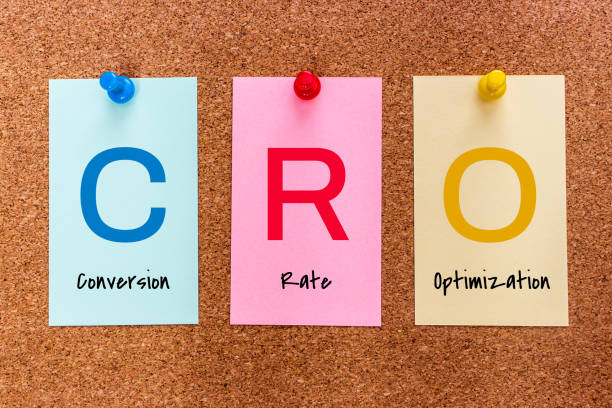
An effective digital marketing strategy incorporates a variety of techniques to optimize results. While websites may employ different approaches based on their specific goals, certain practices like Search Engine Optimization (SEO) and Conversion Rate Optimization (CRO) have consistently proven to drive success. SEO aims to improve a website’s visibility in search engine results for relevant keywords, while CRO focuses on enhancing the quality of leads, conversions, and sales.
By aligning the objectives of SEO and CRO, businesses can create a robust digital marketing strategy. However, conflicting implementation of these strategies can hinder website performance. When used together effectively, SEO and CRO can elevate both traffic and conversion rates for local businesses and large enterprises alike, optimizing their digital presence without sacrificing the effectiveness of either strategy.
SEO vs. CRO: A Complementary Approach
SEO (Search Engine Optimization) is the practice of optimizing your website to improve its visibility in search engine results pages (SERPs). By employing tactics like keyword optimization, technical SEO improvements, and content marketing, SEO aims to drive organic traffic to your website. SEO’s primary goal is to increase your site’s visibility, attract high-quality leads, and ultimately boost revenue.
CRO (Conversion Rate Optimization) focuses on maximizing the effectiveness of that traffic by improving user experience and encouraging visitors to take specific actions. CRO experts analyze user behavior, identify barriers to conversion, and implement strategies designed to increase actions like purchases, form submissions, or newsletter signups. Essentially, CRO turns website visits into measurable conversions.
According to a study by a consultancy firm, companies that prioritize CRO can achieve a 225% higher return on investment (ROI) compared to those that do not. By combining SEO and CRO, businesses can ensure that their increased traffic not only grows but also results in meaningful conversions, such as sales or leads.
The Synergy Between SEO and CRO
Successful digital marketing strategies often hinge on balancing SEO and CRO. A strong SEO foundation is essential for driving traffic, but without effective CRO practices, that traffic can go to waste. For example, a well-optimized blog post might rank highly on Google, but if the page lacks compelling calls to action (CTAs) or clear navigation, users may leave without converting.
SEO and CRO Combined: The Key to Local Business Growth
Local businesses benefit significantly from integrating SEO and CRO to enhance their online presence. According to BrightLocal, 78% of local mobile searches lead to offline purchases, underscoring the importance of local SEO. Combining local SEO efforts with CRO strategies ensures that users not only find your business but are also compelled to take action—whether it’s visiting your store, making a purchase, or booking a service.
For instance, “near me” searches have grown by over 500% in recent years, according to Google Trends. By optimizing your website for these location-specific keywords and ensuring that the user experience is seamless through CRO, you can capture this high-intent traffic and drive more conversions.
How to Effectively Combine SEO and CRO
To fully leverage the potential of SEO and CRO, here are some actionable strategies:
1. Understand Search Intent
Understanding the intent behind a user’s search is critical to both SEO and CRO success. For example, someone searching for “best smartphones of 2024” is likely at the research stage, while someone searching for “buy brand X smartphone” is ready to make a purchase. SEO efforts should align with these stages, and CRO tactics should guide users towards conversions based on their intent.
- Pro Tip: Semrush and Ahrefs offer insights into keyword search intent, helping you tailor your content for conversions.
2. Optimize for Mobile Users
With over 60% of global website traffic coming from mobile devices (Statista), optimizing for mobile is critical. Websites that aren’t mobile-friendly risk losing potential customers, no matter how effective their SEO is. Ensuring that your content is easy to read, your CTAs are prominent, and your forms are simple to fill out on mobile devices can significantly enhance conversions.
3. Use A/B Testing to Optimize Pages
Testing different elements of your website—such as headlines, CTA buttons, or layouts—through A/B testing can reveal what resonates best with users. According to VWO, businesses that implement CRO strategies and conduct A/B testing can see up to a 49% improvement in conversions. When you implement changes, monitor SEO rankings to ensure that CRO adjustments do not negatively impact your search rankings.
4. Leverage Data Analytics
Tools like Google Analytics and Hotjar provide insights into how users interact with your site. By analyzing traffic sources, bounce rates, and conversion paths, you can adjust both your SEO and CRO strategies to better align with user behavior and preferences. Tracking KPIs, such as bounce rate and time on page, can help identify whether your SEO efforts are bringing in the right traffic and if your CRO efforts are converting that traffic efficiently.
Conclusion
SEO and CRO should not be viewed as separate or competing strategies. When effectively integrated, they create a powerful synergy that drives traffic and maximizes conversions, leading to improved business performance. By leveraging SEO to attract the right audience and CRO to convert that audience, businesses can ensure sustainable growth.
Partnering with a digital marketing agency that excels in both SEO and CRO, like us, can help you achieve these goals. Whether you’re a local business looking to improve lead generation or a large enterprise focused on boosting e-commerce sales, combining these strategies is key to your online success.
Ready to optimize both your traffic and conversions? Contact us today to start your journey towards digital marketing excellence.




